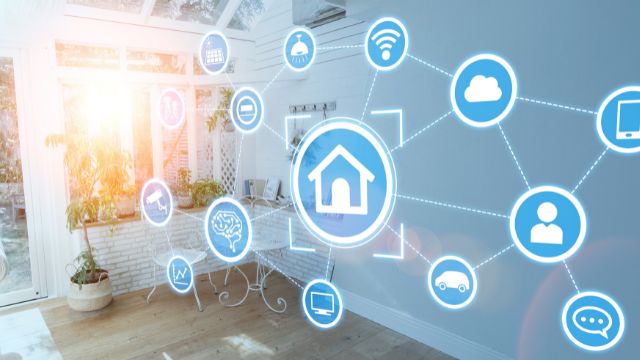
Advisor, Nuro Technologies
In the realm of home automation, technology has evolved to not only simplify our lives but also create spaces that cater to our needs and preferences. One crucial aspect of this transformation is the integration of sensors into various home systems. By leveraging sensors, homes can adapt to our presence, preferences, and environmental conditions, offering a truly human-centric experience. In this blog, we will explore how sensors, from ambient lighting to climate control, are revolutionizing home automation and enhancing our living spaces.

Ambient Lighting: Lighting sets the mood and ambiance of a space, and with sensor-driven automation, it becomes more intuitive than ever. Sensors, such as motion sensors or occupancy sensors, can detect movement and adjust the lighting accordingly. For instance, when someone enters a room, the lights can automatically turn on, and when they leave, the lights can dim or turn off to conserve energy. This automation not only provides convenience but also enhances energy efficiency and creates a welcoming atmosphere.
Temperature and Climate Control: Maintaining optimal temperature and climate conditions within our homes is crucial for comfort and well-being. With the integration of sensors, such as temperature sensors and humidity sensors, home automation systems can monitor and regulate the environment in real-time. These sensors can detect temperature variations and adjust heating, ventilation, and air conditioning (HVAC) systems accordingly. Additionally, sensors can assess humidity levels and activate dehumidifiers or humidifiers as needed, ensuring a pleasant living environment while preventing mold growth or excessive dryness.
Air Quality Monitoring: Indoor air quality significantly impacts our health and overall well-being. Sensors designed to monitor air quality can measure parameters like particulate matter, carbon dioxide levels, and volatile organic compounds (VOCs). By integrating air quality sensors into home automation systems, homeowners can receive real-time updates and automate actions like adjusting ventilation or activating air purifiers. This ensures that the air we breathe is clean, reducing the risk of respiratory issues and promoting a healthier living environment.
Window and Door Sensors: Safety and security are paramount in any home. Window and door sensors play a crucial role in home automation, enhancing both convenience and security. These sensors detect when windows or doors are opened or closed, providing valuable information to the automation system. For example, when a window is opened, the system can automatically adjust the HVAC settings to conserve energy. Moreover, the system can send alerts to homeowners’ smartphones if an unauthorized entry is detected, adding an extra layer of security to the home.
Sunlight and Shade Control: Harnessing natural light efficiently not only reduces energy consumption but also impacts our circadian rhythm and well-being. Sunlight sensors enable automation systems to detect the intensity of natural light and adjust window blinds or shades accordingly. By automatically controlling the amount of sunlight entering a room, homeowners can minimize glare, protect furniture from sun damage, and create a comfortable and conducive environment for various activities.
From ambient lighting to climate control, the integration of sensors into home automation systems has revolutionized the way we experience and interact with our living spaces. By leveraging sensors, homes can adapt to our presence, preferences, and environmental conditions, providing personalized comfort, energy efficiency, and enhanced safety. As technology continues to advance, we can look forward to even more sophisticated sensor-driven automation solutions, creating truly human-centric homes that cater to our unique needs and lifestyles.